Vertical Gardening
Have you recently heard about vertical gardening? If you’re looking forward to creating your own vertical garden but aren’t sure how exactly to do it, you can seek guidance or instructions from various sources. Vertical gardening is the growing of plants (herbs, flowers, climbers, etc.) in a vertical space. This type of gardening is very useful for small spaces as it does not require much space. They are easy to maintain, easy to harvest and look beautiful, enhancing your garden wall and ultimately your complete garden. So, here is your guide to do vertical gardening on your own.
Choose a wall
The first thing you must do is to choose a wall that is suitable for you. While choosing a wall you may consider a few things. You may choose a wall that looks ugly and growing plants on such a wall will definitely cover it and make it beautiful. Choosing a wall also depends upon the type of plants that you would grow. If you are doing exterior gardening, then according to the plants you must consider factors such as the amount of sunlight the wall is exposed to so that it is suitable for your plants.
Choose the plants
The next thing to do is to choose the plants you want to grow. You can grow any type of plants in your vertical garden that you want. You can grow herbs, vegetables, flowers, shrubs, ferns, etc. Choose the plants that would suit the environment that you would place it in. For, exterior vertical gardening, you could use both all – shade and all – sun plants for variety.
If you wish to grow shady vines then you may include: Hardy kiwi, Dutchman’s pipe, climbing hydrangea, etc. Flowering vines such as: Cardinal climber, Cypress vine, Hyacinth bean, Moonflower, etc. Other vines such as: Virginia Creeper, Clematis, Honeysuckle, Trumpet vine, Morning Glory, Black-eyed Susan, etc.
- For ferns, you may include: Boston fern, Pothos, Staghorn fern, English Ivy, Petunias, Verbena (Canadian vervain), etc.
- In herbs, you have Chives, Basil, Mint, Sage, Parsley, Cilantro, Lavender, Thyme, Rosemary, etc.
- In vegetables, you may include: Broccoli, Cauliflower, Kale, Tomatoes, Pepper, Carrots, Turnip, Lettuce, Spinach, etc.
- For ornamental plants, you can grow Geranium varieties (deep red, scarlet, purple, etc.), Peace lily, Star jasmine, etc.
Structure for Vertical gardening
The next thing you must decide is the type of structure that you want for your vertical gardening. You can choose from a wide variety of structures such as: trellises, obelisks, arbor, hanging pots, gutter system, tray herb garden, tower gardens, bottle garden, florafelt system, succulent gardens, etc.
-
Trellis:
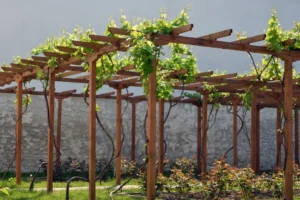
Trellis It is an outdoor garden frame made up of wood, bamboo or metal and is used to support climbing plants. It helps to partition a common area. It adds more growing area for small gardens and makes it more attractive to look at. While using a trellis, you must make sure that there is even space between the trellis and the wall for proper air circulation.
-
Hanging Pots:
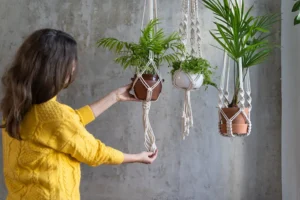
Hanging-Pots You can create your garden by using hanging pots on the wall. The pots must be full of organic soil and with drainage holes in it.
-
Gutter System:
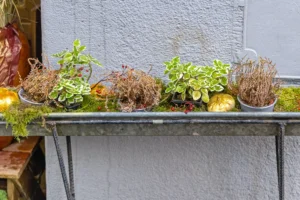
Plantion in gutter sysytem In the gutter system, a long container is used to plant your plants in rows, a single container in a single row which looks like a gutter. You can plant a variety of different plants or similar plants in a single container. They are not attached to the wall but you can create frames to put the containers on it. To make the frame, you can use rain gutter with end caps and supports that can be attached to a wall to attach the gutters together and then hang them.
-
Tray Herb Garden:
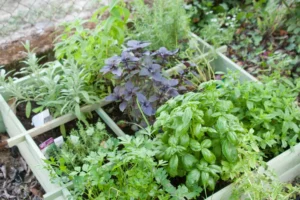
Tray Herb Garden In this structure, the herbs are grown in trays attached to the wall. You can get the trays from the market or create your own with wood, plastic container, etc.
-
Tower garden:
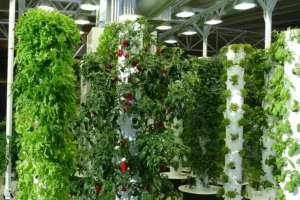
Vertical Tower Garden. It is a vertical tower structure that allows you to grow plants using one unit. The system is so formed that it relies upon a small pump drip irrigation and perforated cap to dip the mineral solution over the plant roots. Thus, it does not require soil but uses only water for its growth.
-
Bottle garden:
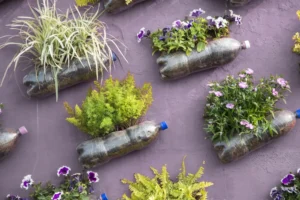
Bottle Garden As the name suggests, in this structure the plants are grown in bottle containers. You can use recycled bottles as containers or glass bottles. The bottle containers are hanged with the help of strings on walls. This takes up less space and gives a unique look to your garden. And as the bottle containers can be small, it is best when you want to grow herbs.
Irrigation System
As vertical gardening is different from other types of gardening using walls as a surface to grow plants, it is best to keep the containers moisturized by using an irrigation system as they are more compact and use less soil. You can install drip irrigation with timers that easily allow water to drip down to the containers in which the plants are placed. Timers in your irrigation system allows you to set the time for the water to flow depending upon the amount of water plants require according to their weather conditions.
Maintenance
Now that your vertical garden is ready, it is important that you maintain it with good care and proper attention. So, to maintain your garden, frequently engage in activities such as pruning and weeding. Install a proper drainage system and ensure that water does not accumulate in one place due to clogged drainage. Keep in check any dead plants or any disease that may have affected your plant and take action accordingly. Do not over water the plants and make sure to provide them with proper nutrients as well.
Vertical gardening may seem a difficult task to do but it is not as difficult as it seems. With proper guidance and by following the steps mentioned above, you can easily create your own vertical garden and if you still need assistance, you can always get it from the various gardening suppliers who provide such services.


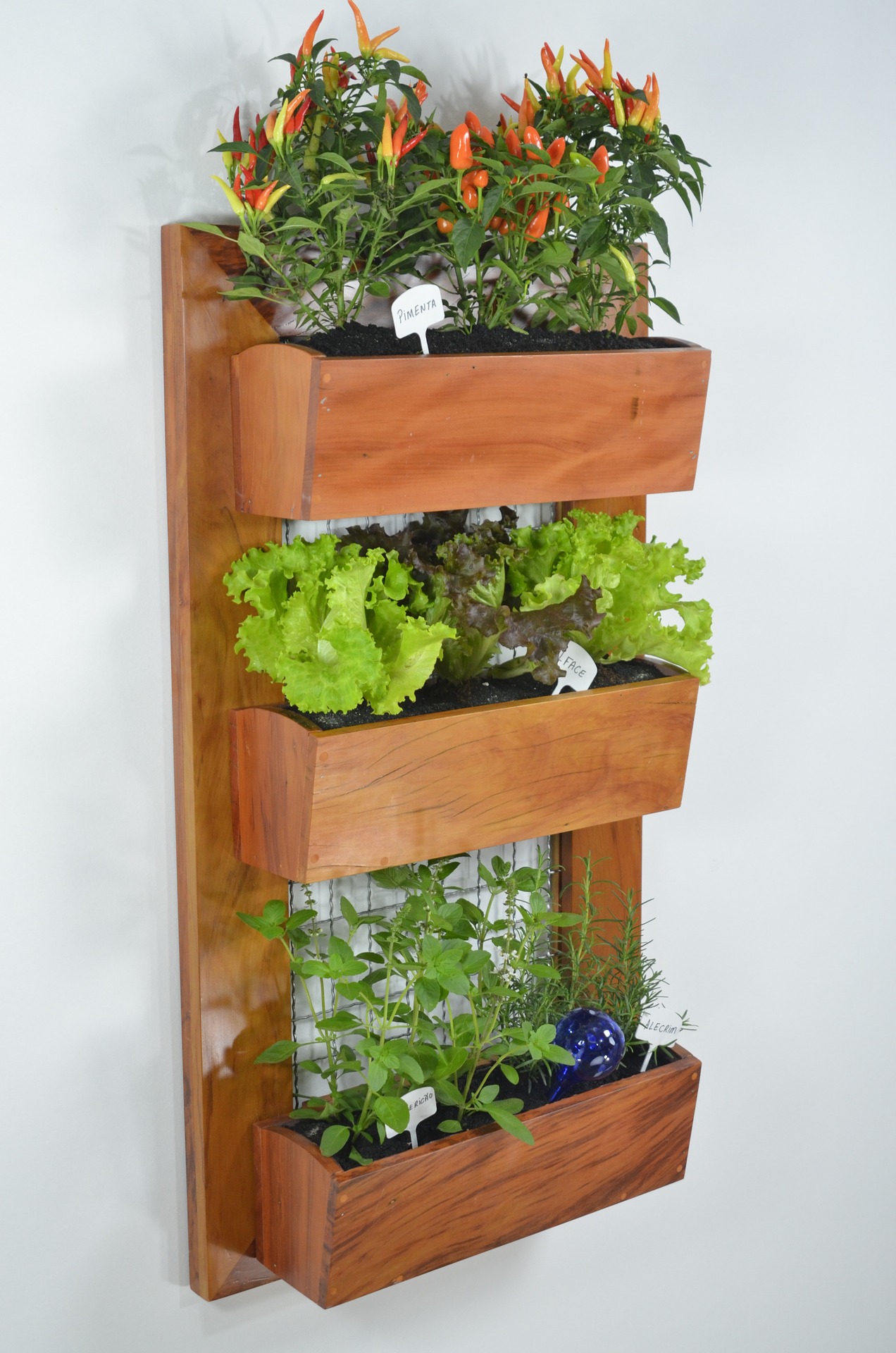
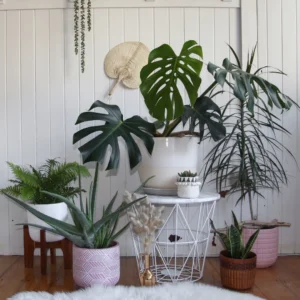

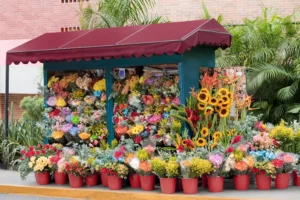
hi, your style is very good.Following your posts.
Thankyou for your valuable feedback and staying connected with us .